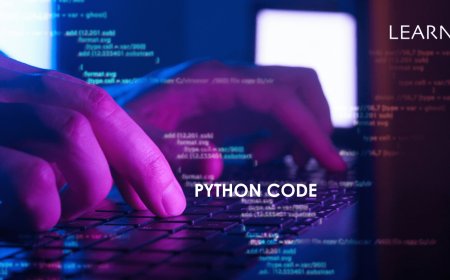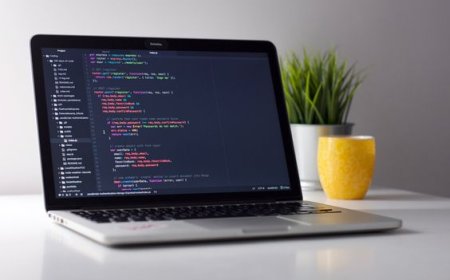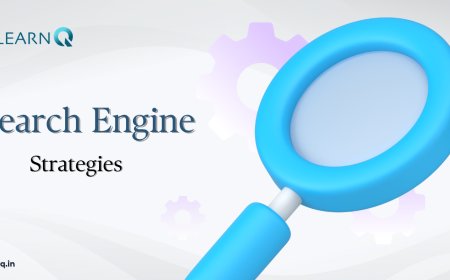Python is a really popular programming language that lots of people love to use. It's great because it's easy to understand and has a ton of helpful tools that make coding easier. Learning Python opens up a world of possibilities in making software. Python tutorials are like guidebooks for people who want to learn how to code. They start with the basics and go all the way to advanced stuff, so beginners can become experts. These tutorials usually have practice exercises and real-life examples to help you learn.
One of the coolest things about Python is all the extra stuff you can add to it, like libraries and frameworks. These are toolkits that help you do different jobs faster and easier. There are libraries for making websites, doing math, analyzing data, and even teaching computers to learn. In this journey through Python's libraries and frameworks, we'll explore what makes them special and how they help programmers build awesome stuff. We'll talk about what each one does and show you some examples, so you can see how they work. So come along with us as we discover all the amazing things Python can do.
Discovering the World of Python's Standard Library
The amazing world of Python's Standard Library! Whether you're just starting with Python or you've been coding for a while, understanding and using Python's Standard Library can make your work much easier. we'll talk about what the Python Standard Library is, look at some important parts of it, and see how you can use it in your own Python projects.
What is Python's Standard Library?
Python's Standard Library is like a big collection of tools that come with Python when you install it. These tools help you do all kinds of things, from working with files to doing math. They make Python powerful and flexible right from the beginning.
Let's Check Out Some Useful Tools!
1. `os` - Doing Stuff with Files and Folders
The `os` tool lets you do things with your computer's operating system. For example, you can use it to find out what folder your program is in or see what files are in a folder.
import os:
Find out which folder your program is in
current_dir = os.getcwd()
print("Your program is in this folder:", current_dir)See what files are in a folder
files = os.listdir(current_dir)
print("These are the files in the folder:", files)2. `DateTime` - Handling Dates and Times
The `datetime` tool helps you work with dates and times. You can use it to figure out what the date and time are right now or format them the way you want.
from datetime import datetime:
Get the current date and time
current_datetime = datetime.now()
print("Current Date and Time:", current_datetime)Format a datetime object
formatted_datetime = current_datetime.strftime("%Y-%m-%d %H:%M:%S")
print("Formatted Datetime:", formatted_datetime)3. `random` - Getting Random Stuff
The `random` tool helps you with random things. You can use it to get a random number or shuffle a list of things.
import random:
Get a random number
random_int = random.randint(1, 100)
print("Here's a random number:", random_int)Shuffle a list of things
my_list = [1, 2, 3, 4, 5]
random.shuffle(my_list)
print("Here's a shuffled list:", my_list)How to Use These Tools in Your Projects
When you're working on your own Python projects, you can use these tools to make your life easier. Instead of making everything from scratch, you can use these tools to save time and write better code. No matter if you're making a website, automating tasks, or playing with data, the Standard Library has tools that can help. Using these tools also makes your code easy to read and understand. Other Python developers will know what you're doing because they use these tools too. It's like speaking the same coding language!
Popular Python Libraries (e.g., NumPy, Pandas)
Python is a popular programming language that's used in many different areas like analyzing data and building websites. There are lots of extra tools you can add to Python to make it even more powerful. Two of the most helpful tools are called NumPy and Pandas.NumPy is short for Numerical Python. It's like a toolbox full of math tools for Python. It helps you do all kinds of math stuff, like working with numbers in arrays (which are like lists of numbers), doing calculations, and even making random numbers.
Panda is a bit like NumPy's best friend. It's another toolbox, but this one is specifically for working with data. It helps you organize and clean up data so you can understand it better. Pandas are great for tasks like sorting data, cleaning it up, and even making cool graphs to show off your findings.
Now, let's look at a simple example to see how these tools work:
import numpy as np:
import pandas as pd:
Making a list of numbers with NumPy
arr = np.array([1, 2, 3, 4, 5])Doing some basic math with NumPy
mean = np.mean(arr)
std_dev = np.std(arr)
print("The average is:", mean)
print("The standard deviation is:", std_dev)Making a series of numbers with Pandas
s = pd.Series([10, 20, 30, 40, 50])Doing some basic math with Pandas
sum_s = s.sum()
max_s = s.max()
print("The sum is:", sum_s)
print("The maximum value is:", max_s)This example just touches the surface of what NumPy and Pandas can do. Whether you're crunching numbers or cleaning up messy data, these tools can make your Python projects much easier. Keep an eye out for more tutorials on how to use these essential Python tools.
An Easy Guide to Python Frameworks (like Django and Flask)
Python is a really popular programming language for making websites. It's easy to use and can do lots of different things. When people make websites with Python, they often use frameworks. Two of the big ones are called Django and Flask.
Django:
Django is a special kind of framework for Python. It comes with lots of tools already built-in, so you don't have to add a bunch of extra stuff. It's like having a whole toolbox ready to go. Django is good for making big websites that need to work with databases.
Flask:
The flask is a bit different. It's like a simpler version of Django. You start with the basics and then add on extra things if you need them. It's good for smaller projects or when you want to make something quickly.
Both Django and Flask have lots of help available online, and lots of people use them. You can find extra things to add to your projects too, which can save you time. In future articles, we'll talk more about Django and Flask. We'll show you how to use them and give you some examples. So, if you're interested in making websites with Python, keep an eye out.
In short, Python libraries and frameworks are like the strong foundation and versatile tools of the Python language. They make hard things easier and help create cool stuff. There are lots of different libraries for all kinds of tasks, so Python can handle almost anything you throw at it. As technology gets better, Python keeps up by adding new libraries to match. Whether you're new to coding or a pro, checking out Python's library options is key to becoming good at it. Looking ahead, Python libraries and frameworks will keep driving new ideas and progress in the tech world. So, embrace what they offer and let them help you make awesome, powerful, and up-to-date projects.




































